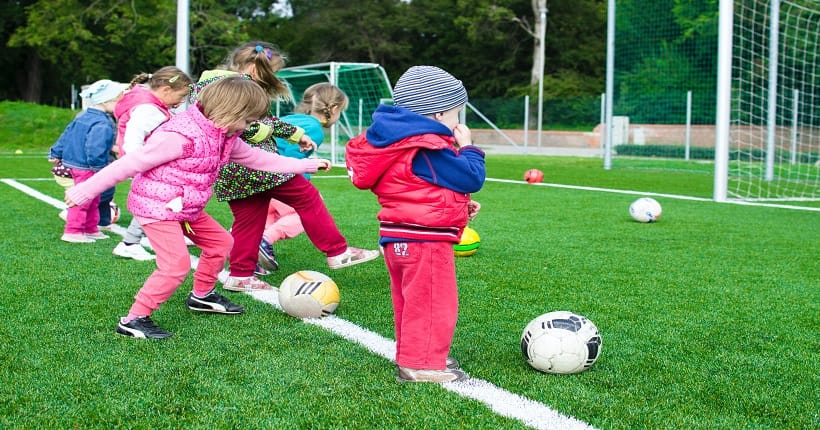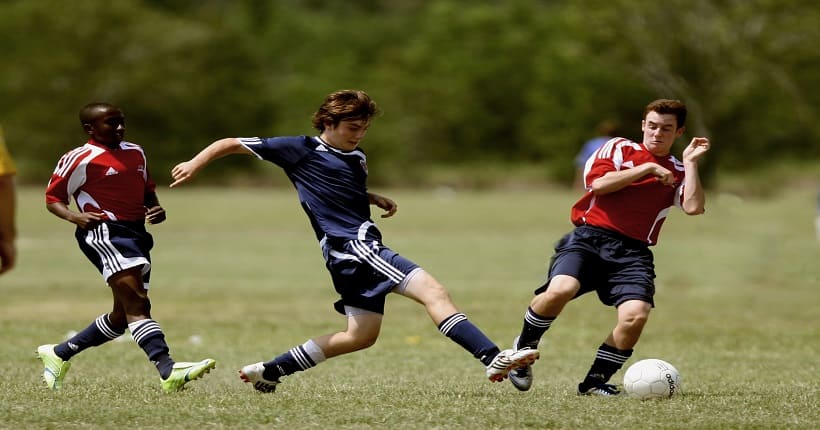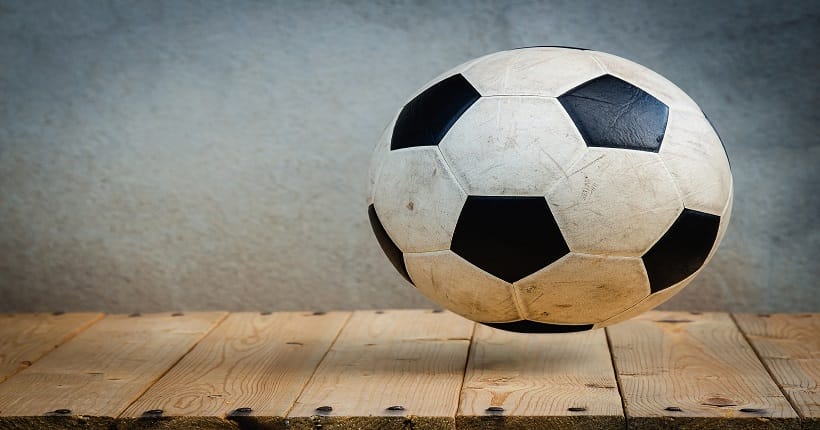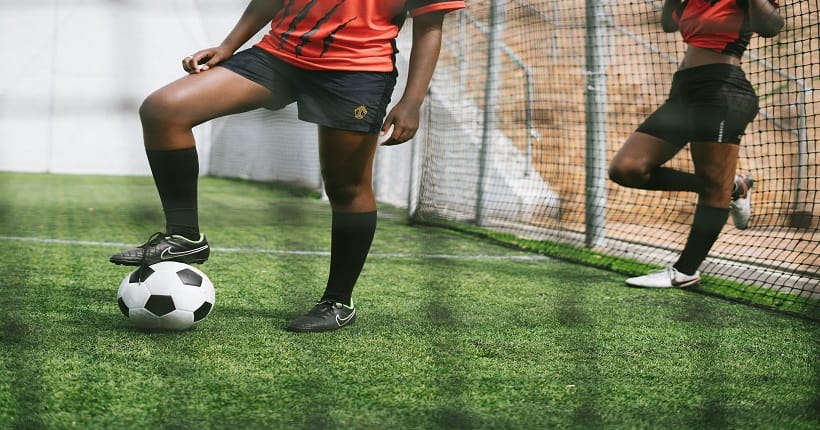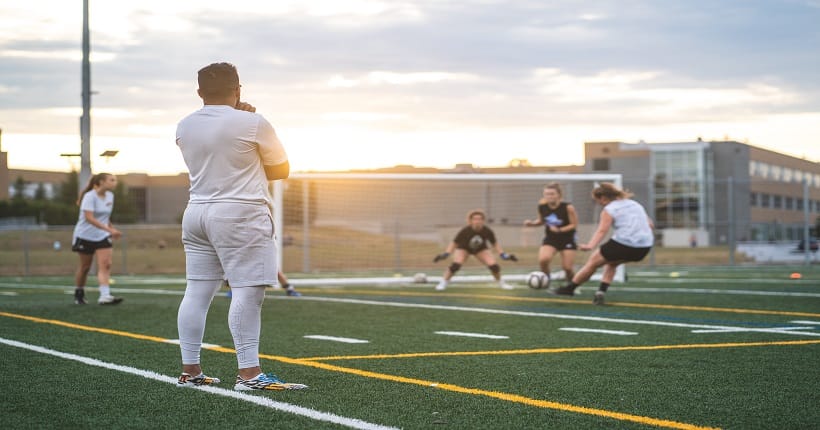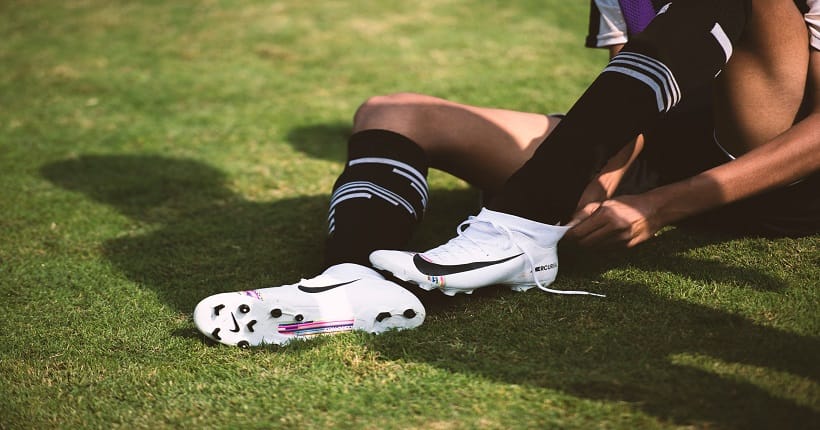How To Get Faster For Soccer?
To get faster for soccer, focus on interval training and incorporating sprint work into your routine. In addition to improving your speed, these exercises will also enhance your agility and endurance on the field.
Developing speed is crucial for soccer players looking to gain an edge over their opponents. By improving your overall speed, you can accelerate faster, react quicker, and cover more ground during a game. We will explore effective strategies and training methods to help you get faster for soccer.
From interval training to incorporating sprint work into your routine, these techniques will not only enhance your speed but also boost your agility and endurance on the field. So, whether you’re a beginner or an experienced player, read on to discover how you can take your speed and performance to the next level in the beautiful game of soccer.
Importance Of Speed And Agility In Soccer
Speed and agility are crucial attributes that can significantly impact a soccer player’s performance on the field. In a fast-paced sport like soccer, having the ability to move quickly and change direction with agility can make all the difference. Whether you’re a forward dribbling through defenders, a midfielder making quick passes, or a defender tracking back to thwart an opponent’s attack, speed and agility are essential skills that can elevate your game to the next level.
Enhancing On-field Performance
When it comes to playing soccer, every second counts. The faster a player can cover ground and react to situations, the more effective they become in executing game strategies. Speed allows players to quickly run ahead to receive passes, outrun opponents, and create scoring opportunities. Meanwhile, agility enables rapid changes in direction, helping players evade defenders, maintain control of the ball, and change game tactics swiftly.
By focusing on enhancing their speed and agility, players can improve their on-field performance significantly. They can reach the ball faster, deliver accurate passes, execute precise dribbles, and evade opponents swiftly. These skills give players a competitive edge, allowing them to dictate the flow of the game and maximize their contribution to their team’s success.
Gaining A Competitive Edge
In soccer, gaining a competitive edge can make all the difference between winning and losing. With the rise in physicality and athleticism in the sport, it’s becoming increasingly important for players to possess top-notch speed and agility. Teams with players who can cover the field quickly and maneuver with agility have a distinct advantage over their opponents.
By actively working on improving their speed and agility, soccer players can gain a competitive edge over others. They can sprint past defenders, intercept passes, create goal-scoring opportunities, and recover quickly when defending. This level of athleticism can help players stand out from the competition and increase their chances of achieving success in their soccer careers.
Reducing The Risk Of Injuries
Speed and agility training not only enhances performance but also plays a vital role in reducing the risk of injuries in soccer. The ability to swiftly change direction and maintain control over movements helps players avoid collisions, mitigate the impact of challenges, and reduce the likelihood of getting injured on the field.
Through targeted speed and agility training exercises, players can develop the strength and stability needed to withstand quick movements, sudden accelerations, and sharp turns. This reduces the strain on their muscles and joints, minimizing the chance of sustaining serious injuries such as sprains, strains, or ligament tears. By prioritizing speed and agility training, players can ensure their longevity on the field and continue participating in the sport they love.
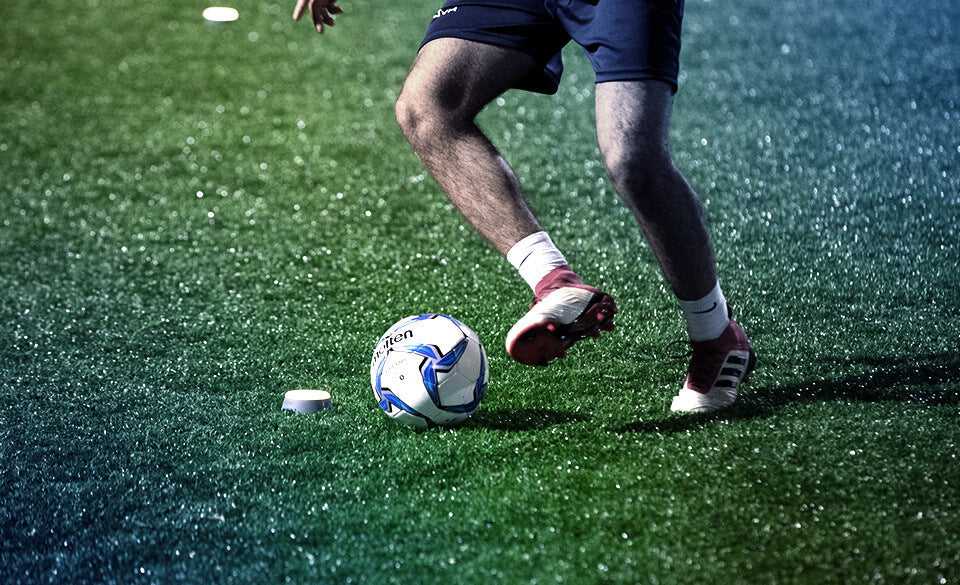
Credit: www.blazepod.com
Essential Speed Training Techniques
The key to becoming a faster soccer player lies in developing your speed through effective training techniques. By incorporating essential speed training techniques into your routine, you can enhance your acceleration, sprinting ability, and overall agility on the field. In this article, we will explore three essential speed training techniques that can take your soccer performance to the next level: plyometric exercises, sprint training, and acceleration drills.
Plyometric Exercises
Plyometric exercises are explosive movements that focus on quick and powerful muscle contractions. They help improve your speed by increasing your muscle strength, power, and coordination. By incorporating plyometrics into your training regimen, you can enhance your explosiveness and agility, allowing you to accelerate quickly and change directions swiftly on the soccer field.
Below are some examples of plyometric exercises that you can include in your speed training routine:
| Exercise | Description |
|---|---|
| Box Jumps | Jump onto a higher surface, such as a plyometric box, and then step or jump down. |
| Bounds | Leap forward as far as possible with each stride, alternating legs. |
| Tuck Jumps | Jump straight up, bringing your knees toward your chest, and then extend your legs before landing. |
Sprint training subheading
Sprint Training
Sprinting plays a crucial role in soccer as it allows you to reach top speeds on the field. By incorporating sprint training into your routine, you can enhance your acceleration, top speed, and endurance. Sprint training not only improves your physical abilities but also sharpens your mental focus and reaction time. Remember to warm up properly before each sprint training session to prevent injuries.
Here are some sprint training exercises that you can incorporate into your speed training program:
- Hill Sprints: Find a hill with a gradual incline and sprint up it for a specific distance or time.
- Interval Sprints: Alternate between sprinting at maximum effort and jogging or walking to recover. Repeat for designated repetitions.
- Resistance Sprints: Utilize resistance bands or a sled to add resistance while sprinting, increasing your explosive power.
Acceleration Drills
Acceleration is crucial for soccer players to quickly get up to top speed from a standstill or when changing direction. By focusing on acceleration drills, you can enhance your ability to explode off the mark and chase down opponents. These drills help improve your muscular strength, coordination, and reaction time, making you quicker off the mark.
Include the following acceleration drills in your speed training routine:
- Agility Ladder Drills: Use an agility ladder to perform various footwork patterns, emphasizing quick and precise movements.
- Bear Crawls: Start on all fours and move forward by alternating your hands and feet, keeping your hips low.
- Resistance Band Sprints: Attach a resistance band around your waist and sprint forward against the resistance.
Agility Training Drills For Soccer Players
When it comes to excelling in soccer, agility is a crucial skill that every player must possess. Agile players can quickly change direction, evade opponents, and make lightning-fast movements on the field. Agility training drills play a vital role in developing this skill. In this section, we will explore three types of agility training drills that soccer players can incorporate into their training regimen:
Ladder Drills For Footwork And Coordination
Footwork and coordination are essential aspects of soccer agility. Ladder drills are a fantastic way to enhance these skills by challenging your footwork precision and agility. These drills involve moving your feet quickly and accurately through the rungs of a ladder laid flat on the ground.
Here are some popular ladder drills:
- Two Feet In: Start at one end of the ladder and step with both feet into each rung. Repeat for the desired number of times.
- Lateral Steps: Stand on one side of the ladder and step laterally with one foot into each rung, then alternate to the other side. This drill helps improve lateral quickness and agility.
- Scissors: Begin on one side of the ladder and step one foot into the first rung, followed by the other foot. Then, quickly move the first foot laterally outside the ladder to the opposite side and step with the other foot. Continue this pattern of alternate footwork.
Cone Drills For Quick Direction Changes
Quick direction changes are fundamental in soccer, especially when evading defenders or making sharp turns. Cone drills are an excellent way to improve your ability to change direction rapidly and maintain control.
Here are a few cone drills you can try:
- 5 Cone Weave: Set up five cones in a straight line with equal spacing. Dribble the ball through the cones in a zigzag pattern, weaving in and out of them quickly.
- Box Drill: Position four cones in a square shape. Start at one corner and sprint diagonally to the opposite corner, then shuffle laterally to the next corner. Repeat this pattern in a continuous manner.
- Figure 8 Drill: Set up two cones in the shape of an “8.” Dribble the ball around the cones, following the figure-eight pattern as quickly as possible. This drill enhances agility and control.
Reaction Drills To Improve Reflexes
Reflexes play a significant role in soccer, where split-second decision-making can determine the outcome of a game. Reaction drills focus on enhancing reflexes and response time. These drills simulate game scenarios and help players react quickly to changing situations on the field.
| Drill Name | Description |
|---|---|
| Mirror Drill | Stand face to face with a partner. Take turns mirroring each other’s movements. Vary the speed and intensity to challenge reaction time. |
| Passing Reaction Drill | Have a teammate or coach stand behind you with a ball. On their cue, turn and react to quickly receive the pass, simulating game-time scenarios. |
| Cones and Reaction | Set up cones in a random pattern. Sprint towards the cones and react to a specific cue or color to quickly change direction or stop. |
Strength Training For Speed And Power
Strength training for speed and power is an essential aspect of soccer training. By incorporating specific exercises for the lower body, core, and upper body, players can enhance their overall athleticism and speed on the field. This article will delve into the three main areas of strength training for soccer players, providing exercises and techniques that can help you get faster and more powerful.
Lower Body Exercises For Leg Strength
The lower body plays a crucial role in a soccer player’s speed and power. By targeting the muscles in the legs, you can improve your acceleration, agility, and kicking strength. Here are some effective lower body exercises that you should include in your training regimen:
- Squats: This compound exercise engages multiple muscle groups, including the quadriceps, hamstrings, and glutes. It helps to develop leg strength and power. Perform squats with proper form, ensuring your knees are aligned with your toes and your back is straight.
- Lunges: Lunges are great for strengthening the quadriceps, hamstrings, and glutes. They also improve balance and stability. Step forward with one leg and lower your body until both knees are bent at a 90-degree angle.
- Deadlifts: Deadlifts primarily target the hamstrings, glutes, and lower back muscles. They are highly effective for improving lower body strength and explosiveness. Maintain a neutral spine and lift the barbell from the ground by extending your hips and knees.
Core Exercises For Stability And Balance
A strong core is essential for stability and balance, both of which are crucial in soccer. These exercises will not only help you stay grounded during quick changes in direction but also transfer power from your lower body to your upper body. Here are some core exercises you should incorporate into your training:
- Plank: The plank is a simple yet effective exercise for strengthening the core muscles, including the abs, obliques, and lower back. Start by positioning your forearms on the ground and extend your legs straight behind you. Maintain a straight line from your head to your heels.
- Russian twists: Russian twists target the obliques and improve rotational strength. Sit on the ground with your knees bent and feet elevated, then lean back slightly. Twist your torso to one side, touching the ground with your hands, and then repeat on the other side.
- Medicine ball throws: Medicine ball throws are excellent for building explosive power in your core muscles. Stand facing a wall and hold a medicine ball at chest level. Rotate your torso and throw the ball against the wall, catching it as it rebounds.
Upper Body Workouts For Overall Athleticism And Speed
Although soccer predominantly focuses on lower body movements, having a strong upper body enhances overall athleticism and speed on the field. Here are some upper body exercises that can improve your performance:
- Push-ups: Push-ups are a classic exercise that targets the chest, shoulders, and triceps. They build upper body strength and stability, as well as improve core engagement. Start in a plank position, lower your body until your chest touches the ground, and then push back up.
- Pull-ups: Pull-ups are excellent for working the muscles in your back, biceps, and shoulders. They help improve your pulling strength, which is crucial for headers and upper body explosiveness. Hang from a bar with your palms facing away and pull your body up until your chin is above the bar.
- Battle ropes: Battle ropes are a dynamic exercise that targets the muscles in your arms, shoulders, and core. Hold one end of the rope in each hand and rapidly move your arms up and down in a rhythmic motion. This exercise is great for improving upper body endurance and explosiveness.
Proper Running Technique For Soccer Players
When it comes to soccer, speed is a crucial advantage. Whether you’re chasing down an opponent or making a breakaway sprint towards the goal, having a strong and efficient running technique is essential for success on the field. In this section, we will explore key elements of proper running technique for soccer players, including foot strike and stride length, arm movement and posture, as well as breathing techniques for optimal performance.
Foot Strike And Stride Length
Foot strike and stride length play a significant role in maximizing speed and efficiency while running in soccer. Aim to land on the balls of your feet rather than your heels, as this allows for a quicker transfer of energy and reduces the risk of injury. Keeping your strides slightly shorter can also help with agility and quick changes in direction.
Here are a few key points to remember:
- Maintain a slight knee bend when your foot touches the ground to absorb impact and generate power for the next stride.
- Avoid overstriding, as it can decrease your speed and make you more prone to injuries.
- Engage your calf muscles to develop explosive power and maintain a quick turnover of strides.
Arm Movement And Posture
Proper arm movement and posture are just as crucial as foot strike and stride length when it comes to running in soccer. Your arms act as a counterbalance, helping you maintain stability and generate momentum.
Here are a few tips to improve your arm movement and posture:
- Keep your elbows at a 90-degree angle and swing them in a controlled and coordinated motion with your stride.
- Maintain a relaxed but engaged posture, with your chest slightly lifted and shoulders relaxed.
- Avoid crossing your arms in front of your body, as it can disrupt your balance and reduce your forward propulsion.
Breathing Techniques For Optimal Performance
Proper breathing techniques can significantly impact your performance on the soccer field. By maintaining a steady flow of oxygen to your muscles, you can increase your endurance and alleviate fatigue.
Consider the following tips for optimal breathing during running:
- Breathe deeply from the diaphragm rather than shallow chest breaths to improve oxygen intake.
- Exhale fully to expel stale air and carbon dioxide, allowing for a fresh inhalation.
- Establish a breathing rhythm that aligns with your running strides, for example, inhaling for two steps and exhaling for two steps.
By focusing on proper running technique, including foot strike and stride length, arm movement and posture, as well as breathing techniques for optimal performance, soccer players can enhance their speed and overall performance on the field.
Speed And Agility Drills For Game-specific Situations
When it comes to soccer, speed and agility are crucial skills that can make a significant difference in a player’s performance on the field. To improve your speed and agility for game-specific situations, it’s essential to incorporate specific drills into your training regimen. In this article, we will explore three effective speed and agility drills that can help you excel in changing directions, decision-making, and match intensity.
Shuttle Runs To Simulate Changing Directions During A Match
One of the key aspects of soccer is the ability to quickly change directions on the field. Shuttle runs are an excellent drill to simulate these game-specific situations. This drill involves setting up a series of cones or markers in a straight line, with each cone placed a few meters apart. Start at one end and sprint to the first cone, touch it, and then quickly change direction and sprint back to the starting point. Repeat this pattern for a specific duration or distance.
Shuttle runs are an effective way to enhance your acceleration, deceleration, and lateral movements. By practicing these drills regularly, you’ll develop the muscle memory and agility needed to react swiftly during a match when you need to change directions.
Small-sided Games To Improve Decision-making Speed
Soccer is a fast-paced sport that requires players to make quick decisions on the field. Small-sided games are an ideal training method to improve your decision-making speed in game-specific situations. These games involve playing on a smaller field with fewer players, increasing the frequency of interactions and decision-making opportunities.
In small-sided games, each player has to constantly analyze the situation, anticipate their next move, and react promptly. This helps to enhance cognitive skills such as spatial awareness, risk assessment, and decision-making under pressure. By regularly participating in small-sided games during your training sessions, you’ll develop a faster decision-making ability and improve your overall game performance.
Interval Training To Replicate Match Intensity
Match intensity is a crucial aspect of soccer performance. Interval training is an effective way to replicate the demands of a soccer match and improve your speed and endurance. This type of training involves alternating between high-intensity sprints and periods of active recovery.
To incorporate interval training into your routine, start with a warm-up, followed by short bursts of intense sprinting. After each sprint, allow yourself a short period of active recovery, such as jogging or walking. Repeat this cycle for several intervals, gradually increasing the intensity and duration as you progress.
Interval training not only improves your speed, but it also enhances your cardiovascular fitness and stamina. By replicating the match intensity through interval training, you’ll be better prepared to maintain your speed and performance throughout the match.
It is important to note that these drills should be incorporated into a well-rounded training program that includes other aspects of soccer training, such as strength training, endurance exercises, and technical skill development. By consistently practicing these speed and agility drills in game-specific situations, you’ll be on your way to becoming a faster and more agile soccer player.
Nutrition And Hydration For Speed Development In Soccer
Balanced Diet With Sufficient Macronutrients
Achieving optimal speed in soccer requires more than just endless hours of training on the field. Nutrition plays a vital role in fueling your body and enhancing your performance. Eating a balanced diet that provides sufficient macronutrients is essential for speed development in soccer.
Focus on consuming nutrient-dense foods that provide the right combination of carbohydrates, proteins, and fats. Carbohydrates are the primary energy source and should make up the majority of your calorie intake. Opt for complex carbohydrates like whole grains, fruits, and vegetables, which provide a steady release of energy throughout the day. Proteins are crucial for muscle repair and growth, so include lean sources such as chicken, fish, beans, and tofu in your meals. Healthy fats, found in avocados, nuts, and olive oil, support brain function and aid in the absorption of fat-soluble vitamins.
Here’s a breakdown of the macronutrients you should aim to include in your daily diet:
| Macronutrient | Recommended Intake | Food Sources |
|---|---|---|
| Carbohydrates | 45-65% of total calories | Whole grains, fruits, vegetables |
| Proteins | 10-35% of total calories | Chicken, fish, beans, tofu |
| Fats | 20-35% of total calories | Avocados, nuts, olive oil |
Hydration Guidelines For Peak Performance
Staying properly hydrated is crucial for optimal speed development in soccer. Dehydration can negatively impact your performance, leading to decreased speed, muscle cramps, and fatigue. To stay adequately hydrated, follow these guidelines:
- Drink water regularly throughout the day, not just during training or matches.
- Monitor your urine color to assess hydration levels. Clear or pale yellow urine indicates good hydration, while dark yellow urine suggests dehydration.
- Avoid excessive consumption of sugary drinks and caffeinated beverages, as they can dehydrate you.
- During intense training sessions, consider consuming sports drinks that provide electrolytes to replenish what you lose through sweat.
Importance Of Pre- And Post-workout Meals
Proper nutrition before and after workouts is essential to support speed development in soccer. Pre-workout meals should focus on providing sustained energy and optimizing performance, while post-workout meals help with muscle recovery and replenishing glycogen stores.
Before your training or match, aim for a meal that is rich in complex carbohydrates, moderate in protein, and low in fat. This could include options like whole grain pasta with lean meat and vegetables or oatmeal with fruits and yogurt. These meals provide a steady release of energy and prevent any discomfort during exercise.
After your workout, consume a combination of carbohydrates and protein to aid in muscle repair and glycogen replenishment. This could be a post-workout shake with a mix of fruits, protein powder, and water, or a balanced meal consisting of grilled chicken, sweet potatoes, and vegetables.
By prioritizing nutrition and hydration, you’ll enhance your speed development in soccer and maximize your performance on the field. Incorporate these guidelines into your routine to fuel your body effectively and unlock your true potential as an agile and faster player.
Recovery And Injury Prevention Strategies
Incorporating Rest Days Into Training Schedules
Rest days are an essential component of any soccer player’s training schedule. While it may be tempting to push through fatigue and train every day, giving your body time to recover is crucial for performance and injury prevention. Rest days allow your muscles to repair and rebuild, reducing the risk of overuse injuries and burnout. When designing your training program, be sure to allocate specific days for rest and active recovery. These rest days don’t necessarily mean sitting on the couch all day; engaging in low-intensity activities like walking or swimming can promote blood flow and aid in your body’s recovery process, keeping you fit and ready for your next training session.
Importance Of Stretching And Foam Rolling
Stretching and foam rolling are two effective techniques to improve flexibility, enhance muscle recovery, and reduce the risk of injuries in soccer players. Before and after each training session or game, make sure to dedicate time to stretching your major muscle groups. Dynamic stretches, which involve active movements, are beneficial for warming up the body and increasing range of motion. On the other hand, static stretches, where you hold a position for a certain period, can be done after exercise to maintain flexibility and prevent muscle tightness. Alongside stretching, foam rolling is an effective form of self-massage that targets tight areas, knots, and trigger points in the muscles. By using your own body weight and rolling over the foam roller, you can release tension and improve muscle tissue quality. Incorporating these practices into your regular routine can help you stay flexible, agile, and reduce the risk of muscle strains and other common soccer-related injuries.
Listening To Your Body To Prevent Overuse Injuries
One of the most important aspects of injury prevention is understanding and listening to your body. Overuse injuries, such as stress fractures, tendonitis, and muscle strains, can occur when you push yourself too hard without allowing adequate recovery time. Pay attention to any signs of pain, discomfort, or persistent fatigue. These can be indications that your body needs rest or modification in training intensity. It’s crucial to differentiate between normal muscular fatigue and pain that may be a result of an injury. Pushing through pain can worsen your condition and prolong your recovery time in the long run. If you do experience pain or notice any unusual symptoms, consult with a qualified healthcare professional or sports therapist to address the issue promptly. Remember, taking care of your body and allowing it to recover is vital for long-term performance and longevity in soccer.
Mental Conditioning For Speed And Agility
When it comes to becoming faster and more agile on the soccer field, physical training is certainly important. However, many athletes and coaches fail to recognize the crucial role that mental conditioning plays in enhancing speed and agility. To truly excel, soccer players must train their minds to be as sharp and agile as their bodies. In this post, we will explore three key aspects of mental conditioning for speed and agility: visualizing success on the field, mental toughness and focus, and confidence-building techniques.
Visualizing Success On The Field
Visualizing success is a powerful technique that can help athletes improve their performance on the soccer field. By vividly imagining themselves executing each movement with precision and speed, players can enhance their muscle memory and improve their reaction time. Visualizing success also helps in coordinating different body movements seamlessly, leading to enhanced agility and quickness.
One effective way to incorporate this technique into your training routine is to close your eyes and picture yourself executing perfect passes, making quick and sharp cuts, and overtaking opponents easily. As you visualize, engage all your senses – feel the texture of the ball, hear the cheers of the crowd, and experience the rush of adrenaline. By regularly practicing this mental exercise, you can program your mind to react swiftly and intuitively on the field, ultimately enhancing your speed and agility.
Mental Toughness And Focus
A strong mental game is just as important as physical strength when it comes to speed and agility in soccer. Mental toughness allows players to push through physical fatigue, maintain focus during challenging situations, and ultimately perform at their best. Developing mental toughness requires discipline, resilience, and self-belief.
One effective technique to build mental toughness is to practice mindfulness and meditation. By dedicating a few minutes each day to stillness and quiet reflection, you can train your mind to stay calm and focused. Additionally, positive self-talk and affirmations can help you develop a resilient mindset, enabling you to overcome obstacles and stay motivated. Remember, a strong and focused mind is the foundation for achieving greater speed and agility on the soccer field.
Confidence-building Techniques
Confidence plays a crucial role in unleashing your full speed and agility potential on the soccer field. When you believe in your abilities, you perform with conviction and take calculated risks. Building confidence is a continuous process, but there are techniques that can help accelerate this journey.
One effective technique is to set small, achievable goals for yourself and celebrate your successes along the way. This allows you to build a positive feedback loop, reinforcing your belief in your abilities. Additionally, surrounding yourself with a supportive and encouraging network, such as teammates and coaches, can boost your confidence and provide invaluable guidance.
Another confidence-building technique is visualization. As mentioned earlier, visualizing success not only enhances technical abilities but also fosters a strong belief in your capabilities. By repeatedly visualizing yourself achieving your goals and performing at your peak, you can cultivate unwavering confidence, leading to enhanced speed and agility on the soccer field.
Tailoring Speed Training To Different Positions In Soccer
Speed is a crucial attribute for success in soccer, allowing players to outpace opponents, make quick turns, and cover ground efficiently. However, the speed requirements can vary greatly depending on the position a player occupies on the field. In this section, we will delve into the position-specific speed requirements and explore how speed training can be tailored for goalkeepers, defenders, midfielders, and forwards.
Position-specific Speed Requirements
Each position in soccer requires a unique set of skills and speed attributes. Here’s a breakdown of the position-specific speed requirements:
| Position | Speed requirements |
|---|---|
| Goalkeepers | Quick lateral movements, explosive diving, and reaction speed to swiftly cover the goal area. |
| Defenders | Accelerating quickly to close down opponents, maintaining a high tempo, and recovering defensively. |
| Midfielders | Rapid changes of direction, quick bursts of speed in open spaces, and the ability to cover large areas of the field. |
| Forwards | Explosive acceleration for breakthrough runs, speed to outpace defenders, and agility to evade challenges in the final third. |
Speed Training Considerations For Goalkeepers, Defenders, Midfielders, And Forwards
When designing speed training programs, it is essential to consider the specific requirements of each position. Here are some key considerations for tailoring speed training to goalkeepers, defenders, midfielders, and forwards:
Goalkeepers:
- Focus on exercises that enhance reactionary speed, such as agility ladder drills and reaction ball training.
- Include lateral movement drills to improve quickness in diving and reaching for saves.
- Incorporate explosive power exercises like box jumps and plyometrics to enhance diving ability.
Defenders:
- Emphasize acceleration and change of direction drills to enhance quickness in closing down opponents.
- Include speed endurance exercises to maintain a high tempo throughout the match.
- Integrate exercises that improve recovery speed, allowing defenders to rapidly regain defensive positions.
Midfielders:
- Incorporate agility drills that improve rapid changes of direction and quick bursts of speed.
- Include interval training to develop the ability to cover large areas of the field repeatedly.
- Integrate exercises that enhance speed endurance, enabling midfielders to maintain a high work rate throughout the match.
Forwards:
- Focus on exercises that enhance explosive acceleration for breakthrough runs behind the defense.
- Incorporate speed and agility drills to outpace defenders and create scoring opportunities.
- Include exercises that improve agility and quickness to evade challenges in the final third.
By tailoring speed training to the specific requirements of each position, players can enhance their performance on the field and gain a competitive advantage against opponents. It is essential to understand the unique demands of each position and design training programs that address them effectively.
Track And Assessing Your Speed Progress
Tracking and assessing your speed progress is crucial for maximizing your performance on the soccer pitch. By using timing equipment, keeping a training log, and adjusting your training programs based on your progress and goals, you can effectively measure your improvements and make any necessary changes to optimize your training regimen.
Utilizing Timing Equipment For Accurate Measurements
One of the most reliable ways to track your speed progress is by utilizing timing equipment. This can include devices such as speed guns or laser timing systems, which provide accurate measurements of your sprint times. By consistently timing your sprints, you can monitor improvements over time and identify any areas that need further attention.
Keeping A Training Log To Track Improvements
Another valuable tool for tracking your speed progress is maintaining a training log. This involves recording details such as the distance covered, duration of sprints, and any additional notes or observations from your training sessions. By keeping a comprehensive log, you can track your improvements, identify patterns in your training, and make informed adjustments to your workouts.
Adjusting Training Programs Based On Progress And Goals
Once you have collected data from timing equipment and training logs, it is important to use this information to adjust your training programs. By analyzing your progress and comparing it to your goals, you can make targeted modifications to your workouts. For example, if you notice that your acceleration is improving but your top speed remains stagnant, you can tailor your training to specifically address increasing your maximum velocity.
| Benefits of tracking your speed progress |
|---|
| • Allows you to monitor your improvements over time. |
| • Helps identify areas for further improvement. |
| • Enables you to make informed adjustments to your training programs. |
| • Keeps you motivated by seeing tangible progress. |
Tracking and assessing your speed progress in soccer is not only essential for gauging your improvement but also for tailoring your training to target specific areas of weakness. By utilizing timing equipment, keeping a detailed training log, and adjusting your programs based on your progress and goals, you can optimize your training and enhance your speed on the soccer field.
Frequently Asked Questions For How To Get Faster For Soccer?
How Do I Increase My Speed For Soccer?
To increase your soccer speed, focus on improving your sprinting technique. Practice explosive starts and accelerations, incorporating drills like shuttle runs and ladder drills. Improve your overall fitness through cardio exercises like running and interval training. Strengthen your leg muscles with exercises like squats and lunges.
How Can I Improve My Speed For Soccer?
To boost your speed for soccer, focus on sprinting drills, agility exercises, and regular cardio training.
What Are Some Effective Soccer Training Techniques?
Dynamic stretching, cone drills, ladder drills, and plyometric exercises are all effective training techniques for soccer.
Is Strength Training Important For Soccer Players?
Yes, strength training is crucial for soccer players as it enhances speed, power, and prevents injuries.
How Do I Increase My Endurance For Soccer?
To increase your endurance for soccer, engage in interval training, long-distance running, and practice high-intensity drills.
What Role Does Nutrition Play In Improving Soccer Performance?
Proper nutrition is key in maximizing soccer performance. Focus on consuming balanced meals, staying hydrated, and fueling before and after games.
Conclusion
To summarize, increasing your speed in soccer requires a combination of proper training, technique, and dedication. Incorporate exercises that target speed, such as sprints and agility drills, into your training routine. Focus on improving your acceleration, top speed, and explosiveness.
Utilize proper running form and maintain a balanced diet to fuel your performance. With consistent practice and determination, you’ll be able to enhance your speed on the soccer field.

